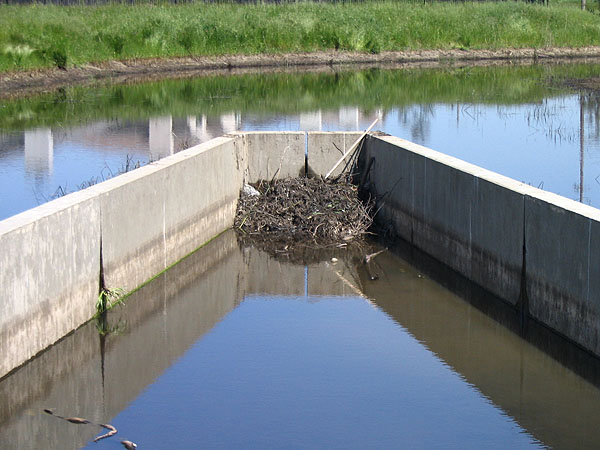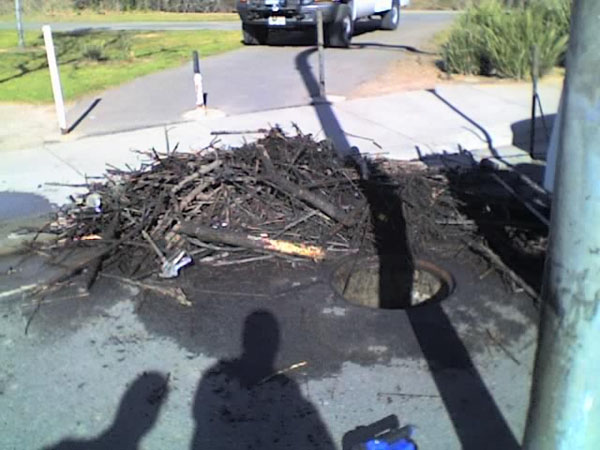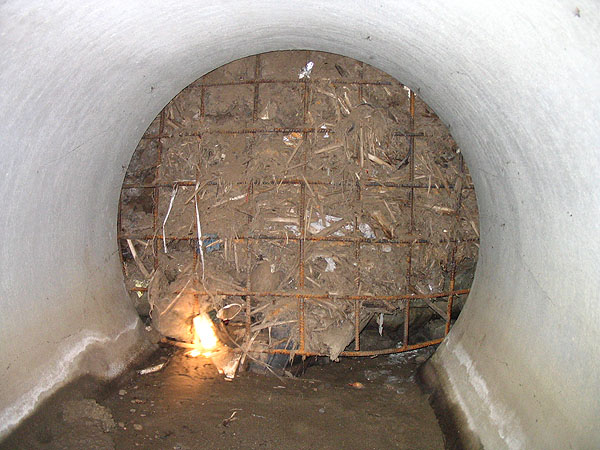How Beavers Impact Storm Drainage & Flood Control Facilities Fact Sheet
Background on Beavers
The beaver is North America's largest rodent and lives in the water with an average life span of 5 to 10 years. Most of the beaver's diet is made up of tree bark and the soft tissue that grow under the bark of a tree.
Beavers cut limbs and whole trees to build dams, usually using 2- to 4-inch diameter woody limbs and mud. According to Hinterland Who's Who a beaver can cut down more than 200 trees a year. It can fell trees up to about 16 inches in diameter.
Where present, river otter and wolves are the most important predators of beavers. Coyotes, bobcat, and large birds of prey occasionally kill young beavers. Urbanized areas such as the City of Elk Grove have few such predators to control the population.
Problem
An excessive population of beavers can pose health and safety risks to the community because they damage the City's creeks and channels, flood control and drainage system, and surrounding trees and shrubs. Beavers plug storm drain outlets and culverts, creating a flooding hazard for Elk Grove residents and businesses. They also destroy trees which provide habitat for other native wildlife and impound waters, which enables breeding of mosquitoes that, according to the Sacramento Yolo Mosquito & Vector Control District, may carry the deadly West Nile virus. Beaver activity costs the City over $75,000 annually to remove obstructions in the drainage system and to protect trees. The attached photographs show the recent beaver damage.
City Program
The City's beaver management program is designed to balance environmental stewardship with protection of public health and property. The objective of the program is to control the population where extensive tree damage or flood hazards have been created. To discourage beavers and protect trees, the City places wire mesh around trees at selected locations and keeps portions of creeks that are normally dry in the summer well-drained. In addition, the City contracts with the US Department of Agriculture Wildlife Services (WS) for removal of beavers where necessary.
Beaver Removal
The goal is to remove problem animals at specific locations where property damage occurs. The WS has developed stringent requirements and guidelines for the program. Associated directives for the removal are attached. The WS employs wildlife biologists and trained specialists to accomplish this work. WS personnel with expertise in removing beavers place capture devices in those areas where beaver structures are causing damage and threatening storm drainage and flood control facilities.
The beavers are generally destroyed rather than relocated. Relocation of wild mammals is not a biologically sound practice in many situations and is highly restricted in the State of California. Considerable stress can be placed on the transported animals due to relocation-related activities and territorial disputes, often resulting in low survival rates.
Wildlife Services personnel monitor the devices and remove captured beavers. In many cases the beaver is alive and must be humanely destroyed in accordance with the WS Directive conforming to the American Veterinary Medical Association Panel on Euthanasia using firearms or euthanasia drugs.






